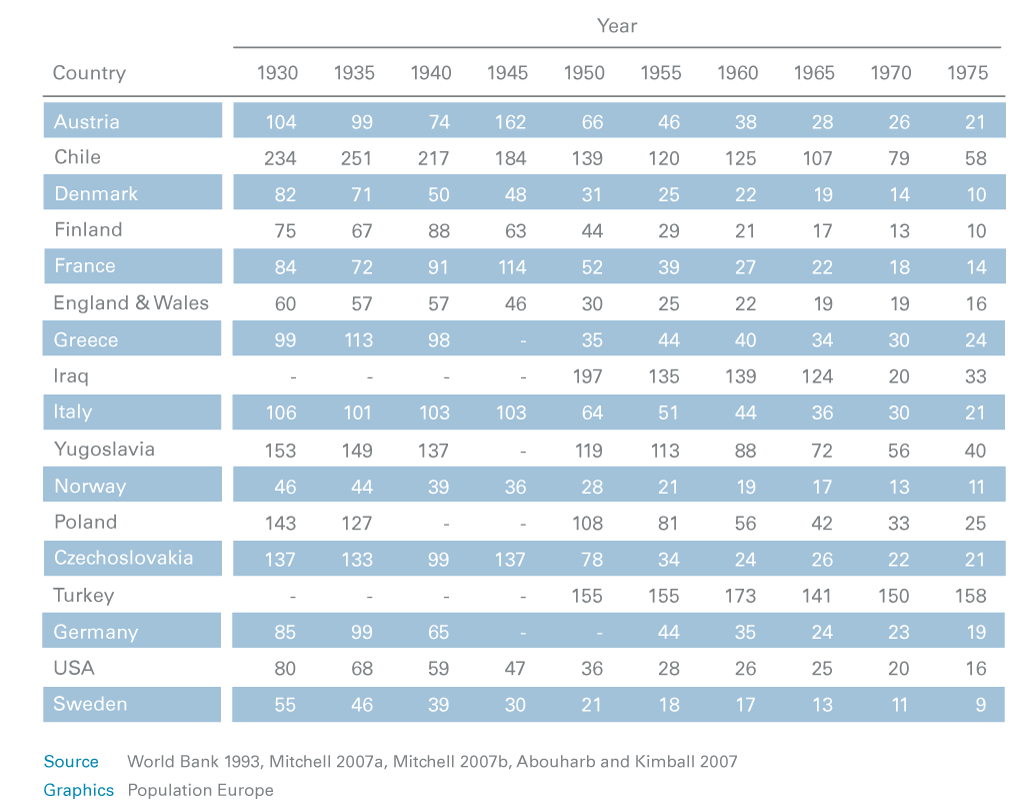Adverse health conditions experienced during individuals’ first year of life increase the risk of sick leave in adulthood. This link, explored in a study by Jonas Helgertz and Mats R. Persson (Lund University, Sweden) is not mediated by socioeconomic circumstances later in life.
The scientists use infant mortality rates as an indicator of early life conditions at any given time and place. This information is linked to the individual data of 9000 biological siblings from 17 countries of origin and living in Sweden during the time period 1981–1991. Results show that an increase in infant mortality rate by ten per thousand is associated with a four per cent higher probability of experiencing sick leave. Despite the importance of socioeconomic status during adulthood on how often one is absent due to illness, these factors do not mediate the influence of the health conditions experienced during the first year of life, suggesting that the association from early life conditions on sickness absence in adulthood operates as a direct mechanism.

Table 1: Infant Mortality Rates (IMR) by country of birth. Large shares of refugees arriving during this period originated from health environments which - in terms of IMR - were similar to the situation in Sweden more than 100 years earlier.
The impact of parent’s education
Parents' educational level influences the impact of infant mortality rate on the sickness risk experienced by their children later in life. The link between early life conditions and sick leave is only present for children of parents with a primary level education and not for individuals with more educated parents. These findings suggest that families with more abundant resources have the ability to protect their child from exposure to adverse health conditions during early life, or to cancel out these negative influences.
Life-course approach and new measurements
These result are in line with the infancy inflammation hypothesis, which suggests that the exposure to diseases or other unhealthy environmental factors during the first years of life would trigger a permanent inflammatory response, elevating the risk of experiencing a range of diseases throughout the remainder of life.
Helgertz and Perssons’s analysis contributes three important aspects to the existing literature: Firstly, the use of longitudinal data (from the Swedish Longitudinal Immigrant Database (SLI)) allows for a life-course approach that takes into account long-run effects of early life conditions. Secondly, the use of the infant mortality rate as the measurement of early life conditions can be considered as exogenous to the individuals' health status later in life. This is important since otherwise unobserved “third factors”like genetic endowments might influence both childhood health and adult circumstances. Thirdly, by using a sample of biological siblings and including sibling fixed effects, the influence of unobserved and time constant characteristics shared by the siblings at the family level such as common genetic factors, traditions, norms and household practices is cancelled out.
This Population Digest has been published with financial support from the Progress Programme of the European Union in the framework of the project “Supporting a Partnership for Enhancing Europe’s Capacity to Tackle Demographic and Societal Change”.